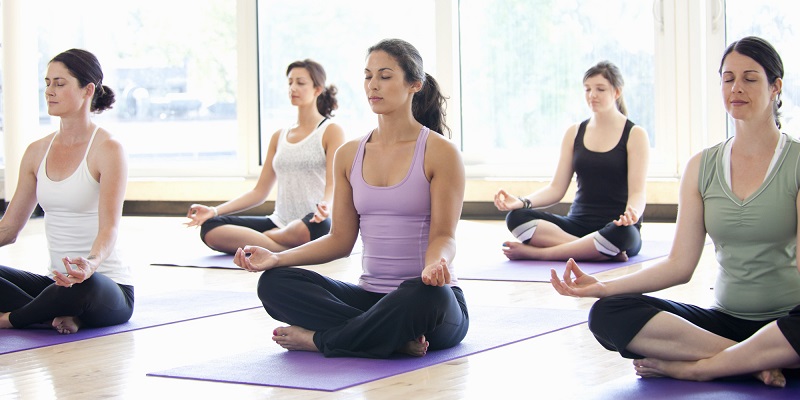
Yogic cleansing:
The ancient yogic literature describes two sets of mechanisms in the human body: one for cleansing the body, the other for nourishing it. They work together in harmony, balancing each other. In explaining ways to make the body healthy.
yoga first discuss those systems which are busy in cleansing the body: the lungs, pores, kidneys and bowels. One should watch and see that the lungs expand rhythmically, that the pores are functioning properly, that the kidneys are operating normally and that the bowels move regularly.
Natural Yogic Cleansing
One should try to understand their natural cleansing systems and learn to control and assist them – because if the cleansing systems are not functioning properly, the nourishing systems cannot do their work; the body will begin to break down. For instance, you cannot inhale unless you have first exhaled. If you gave not moved your bowels, if you have not expelled that waste, then you cannot enjoy eating your meal.
Yogic Cleansing for Disease
Resistance and irregularity create disorders and disease in the body and if the body is discomfort and disease. The mind also remains under stress and the nervous system in tension.
There are yoga texts which are totally devoted to the science of the breath, for proper regulation of the breath is the basis of good health. The breath is the bridge between body and mind. It is the subtle thermometer which registers the conditions of both the body and mind.
The breath is the source of life. Proper breathing is the key to good health. Modern scientists are only now beginning to understand the relationship of the breath control with body physiology.
It has been demonstrated that by practicing simple breathing exercises one can control the heart rate, skin temperature, digestive organs and other functions which were until recently thought to be beyond the control of the conscious mind. The yogis, however, have known and practiced these skills for thousands of years.
The breath is the vehicle for the energy called ‘Prana’. Inhalation and exhalation constantly function like two caretakers in the city of life. The exhalation expels the used up gases and the inhalation supplies the vital energy prana from the atmosphere. One should start learning to regulate the breath by practicing diaphragmatic breathing.
The diaphragm is a dome shaped muscle located under the lungs. You inhale by contracting or pulling down the diaphragm. This downward pressure forces the abdomen outward and sucks air into the lungs. Relaxing the diaphragm allows it to float up to its original position. When this happens the air is expelled. By properly regulating the movement of the diaphragm can induce a profound physical relaxation and a deep feeling of calmness and turn off the internal stress response.
The habit of breathing in this way can be formed by paying attention to the diaphragmatic movement for a few days. There are four basic things to watch for in learning to breathe properly. First, you should learn to fully fill the lungs with each breath. Learn to breathe deeply; it is very simple if you are aware of what you are doing. In breathing deeply you can use your full lung capacity, and slowly you will find that this capacity is increasing.
Secondly, as you practice breathing you should be sure that you are not creating a long pause between the inhalation and the exhalation. It has been discovered that anyone who creates a long pause after expiration either already has certain symptoms of heart disease or is predisposed to the future development of coronary disease.
The third thing is to observe in the breath is the regular flow of the inhalation and exhalation. The breath should be smooth; there should be no jerks in the breathing. If someone receives a mental or emotional reaction can disturb the motion of the lungs and the pumping station of the heart. That in turn, will disturb the vagus nerve and the rest of the involuntary nervous system. When the breath flows smoothly, relaxation occurs.
Lastly, one should watch for noisy breathing, which is a sign of obstruction in the nostrils. The breath should be silent, without turbulence. If done correctly you will notice a sensation of coolness at the tips of the nostrils upon inhalation and a feeling of warmth on exhalation.
Furthermore, there are some things that anatomy does not teach us. One of these is that breathing through the left nostril is different from breathing through right nostril. This is due to the tiny nerve endings at the base of the nose. These nerve endings connect directly to the brain and are stimulated by smell and also by the flow of the air as it passes by.
Thus air flowing through the left nostril will cause nervous impulses to be sent to one part of the brain, signalling restfulness and calmness, while when right nostril breathing predominate the body is prepared for more active process, such as digestion. The nostrils are very sensitive and important anatomical structures and should be treated properly.
They should be cleansed regularly and there are various ways of doing this. One of them, called neti kriya, involves cleaning the nostrils by pouring lukewarm saline water first through one nostril and then the other, allowing it to flow out the opposite side. The practice also helps prevent infections and allergies. This purification technique will clean out excessive mucus, open up blocked passages and make breathing easier. After one learns to breathe properly will find their mind has become very clear and calm.
It’s been said in the yogic text; “when you own your breath, nobody can steal your peace”.
Health Benefits of Yogic Cleansing
You hear plenty about the supposed health benefits of a cleanse or detox, designed to eliminate toxins from your body. There are many claims about various detox regimens, which may be within the type of a quick, diet, drink or powder.
Removing toxins has questionable benefits, including:
- Improved energy.
- Weight loss.
- Relief from constipation.
- Resolved headaches, muscle aches and fatigue.
Sounds great, right? What you will not realize is that our bodies naturally detox! Our alimentary canal, liver, kidneys and skin are chargeable for breaking down toxins for elimination through urine, stool or sweat.






